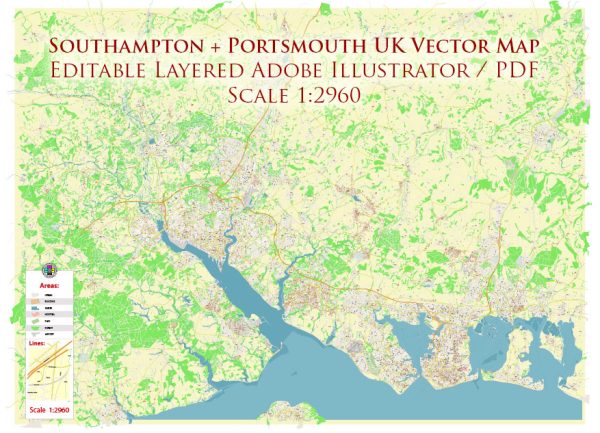The history of urban development in Southampton and Portsmouth, both located on the southern coast of England, is rich and diverse. These cities have played significant roles in maritime, economic, and military history, shaping their urban landscapes over the centuries.
Southampton:
- Medieval Origins (c. 10th – 14th century): Southampton’s history dates back to Roman times, but it gained prominence in the medieval period as a key port for trade and embarkation to continental Europe. The city walls and medieval street layout still bear witness to this era.
- Tudor and Stuart Period (c. 16th – 17th century): Southampton continued to thrive during the Tudor and Stuart periods, with the city becoming a major center for shipbuilding and maritime trade. The Wool House, a Tudor warehouse, is a tangible reminder of Southampton’s mercantile past.
- 18th and 19th Centuries – Industrialization and Expansion: The Industrial Revolution had a profound impact on Southampton. The docks were expanded, and the city became a gateway for the British Empire. The Bargate, a medieval gatehouse, underwent modifications during this time, reflecting the city’s evolving needs.
- World War II and Reconstruction: Southampton suffered extensive damage during World War II due to bombing raids. The post-war years saw significant reconstruction efforts, with the city adapting to the changing economic landscape and the decline of traditional industries.
- Late 20th Century – Economic Diversification: Southampton’s economy diversified in the later part of the 20th century, with a shift from heavy industry to service sectors. The WestQuay shopping center and modern waterfront developments symbolize this transformation.
Portsmouth:
- Medieval and Tudor Periods (c. 13th – 17th century): Like Southampton, Portsmouth has ancient origins. Its strategic location led to the construction of a medieval castle by Richard the Lionheart. During the Tudor period, Henry VIII built the Mary Rose, a flagship that sank off the coast of Portsmouth and was later recovered.
- Naval Expansion (18th – 19th centuries): Portsmouth became a key naval base during the 18th and 19th centuries, playing a crucial role in the British Navy. The Historic Dockyard, home to the HMS Victory and the Mary Rose Museum, showcases this maritime heritage.
- World War II and Reconstruction: Similar to Southampton, Portsmouth suffered extensive damage during World War II. The reconstruction efforts post-war included the rebuilding of housing and infrastructure.
- Post-war to Present – Redevelopment and Modernization: In the post-war era, Portsmouth underwent redevelopment to accommodate changing economic needs. Gunwharf Quays, a former naval site, has been transformed into a modern shopping and residential district, exemplifying the city’s adaptability.
Both Southampton and Portsmouth continue to evolve, blending historic charm with contemporary developments. The maritime legacy, evident in museums, historic docks, and cultural landmarks, remains a defining feature of these vibrant cities on the south coast of England.


 Author: Kirill Shrayber, Ph.D.
Author: Kirill Shrayber, Ph.D.